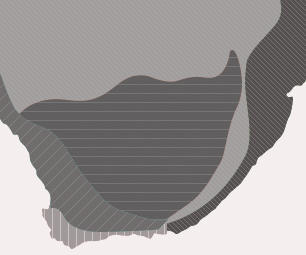Plectranthus ambiguus
Plectranthus ambiguus (Bolus) Codd
Family: Lamiaceae
Common names: pincushion spurflower ( Eng. ); speldekussing spoorsalie (Afr.); iboza elincane (Zulu)
Introduction
Plectranthus ambiguus brings soft green foliage and a splash of vivid violet-purple during autumn to shady areas in the garden, and it is easy to grow.

Description
Description
Plectranthus ambiguus is a spreading, herbaceous, perennial groundcover 300-700 mm tall. Stems are hairy and more often grow flat and sideways than upwards, rooting freely at nodes. The leaves are ovate, slightly wrinkled by the veins (rugose), and thinly hairy. The apex is acute and the margin has 6-12 pairs of rounded teeth (crenate). There are often long purplish hairs on the petioles and the veins on the underside of the leaves.

The flowers are deep blue-purple to violet and are densely packed into a terminal flower head, 50-180 mm long. Each flower has a toothed calyx and a corolla with a with a long, narrow, straight, parallel-sided corolla tube, 20-30 x 1 mm, and two lips (bilabiate). Flowering time is autumn (March to May).

The seeds, 1.5 mm long, are dry, black to dark brown nutlets, up to four per flower, attached inside the calyx. After fertilization, the calyx enlarges and persists for a while but eventually falls off.
Conservation Status
Status
Plectranthus ambiguus is not threatened, it is assessed as Least Concern (LC) on the Red List of South African Plants.
Distribution and habitat
Distribution description
Plectranthus ambiguus grows on the fringes of subtropical coastal and afromontane forests and shaded rocky slopes from the Albany District in the Eastern Cape to northern KwaZulu-Natal, where rainfall is 600-1500 mm per annum and it is frost-free. Plants vary throughout the range, those in the south tend to be smaller and hairless when mature.
Derivation of name and historical aspects
History
The name Plectranthus is from the Greek plektron, a spur and anthos, flower; referring to the spur that is found at the base of the corolla tube of the type species for the genus, P. fruticosus. As it turned out, this was not the best name for the genus as few other Plectranthus species have the spur. The species name ambiguus means doubtful or uncertain, because botanists initially struggled to classify it, placing it in another genus.
Plectranthus ambiguus was first collected by Johann Drège in 1832 between the Mgazana and Mzimvubu Rivers in KwaZulu-Natal. It was first described as P. coloratus by Bentham & Meyer in 1837, but this name is not valid as it had already been applied to another Plectranthus species. Dr Bolus described it as Orthosiphon ambiguus and Dr Codd transferred it to Plectranthus in 1964.
This species was first cultivated at Durban Botanic Garden in 1895 by John Medley Wood. It was brought to Kirstenbosch in 1915 by the former Curator of the Karoo NBG, Frank Stayner.
The genus Plectranthus belongs in the mint and sage family (Lamiaceae) and consists of annual or perennial herbs or shrubs with herbaceous stems and leaves, sometimes semi-succulent or succulent, with usually terminal, spike-like inflorescences of two-lipped flowers. There are ± 350 species spread throughout the tropical and warm regions of the Old World, in Africa, Madagascar, Asia, India, Australia and a few Pacific islands. There are 53 species in southern Africa, occurring mainly in the southeastern and eastern parts and absent from the Northern Cape.
Ecology
Ecology
Most plectranthus are adapted to life in the summer rainfall forest, and have to deal with low light, trampling, winter drought, and root competition. They are fast-growing, which enables them to move quickly into areas of good light and/or nutrients.
They root freely from nodes so that if a plant is damaged and a branch is broken off it has a good chance of rooting and developing into an independent plant. They have a shallow root system and grow in the upper layers of the soil and leaf litter, which allows them to use the smallest amount of water and successfully compete with the roots of other plants.
During periods of drought, they appear wilted and dried out but usually recover quickly after receiving water. Most plectranthus flower during late summer and autumn at the end of the growing season when the plants are at their peak with enough water and energy to produce the flowers and seeds. Seed is dispersed during the dry winter and is ready to germinate when the rains return in spring to early summer.
At Kirstenbosch the Plectranthus flowers attract bees, butterflies, carpenter bees, even sunbirds, but are most likely pollinated by specific insects in their habitat. Van Jaarsveld (2006) quotes a recent pollination study at the University of KwaZulu-Natal that found a correlation between the floral tube length and the proboscis length of visiting insects, indicating that they have co-evolved. Plectranthus ambiguus is a long-tubed species that was found to be pollinated by nemestrinid flies with probosces of similar length to the flower tubes.
To prevent self-pollination, the anthers ripen before the stigma. When all the pollen has been shed, the stamens curl back leaving the style sticking out beyond the flower tube so that the stigma is ready to receive pollen from visiting insects.
The teeth on the calyx probably assist in dispersal by catching on passing animals causing the branch to be pulled or shaken thus throwing the seeds further but not too far. It is not in the interests of the plant for the seed to be carried too far as it could be carried out of the safe habitat of the parent plant into a more hostile environment where the seedlings will not survive.
Uses
Use
Plectranthus ambiguus leaves are used in traditional medicine to treat colds.

Growing Plectranthus ambiguus
Grow
Plectranthus ambiguus is an excellent, fast-growing groundcover for light to medium shade in frost-free, subtropical and coastal gardens. It is a good plant for containers and hanging baskets and can be grown indoors. It grows in summer, the growing season starts in spring, it flowers in autumn and is inactive in the winter when it can be pruned back - best time to prune is midwinter. It does not need to be pruned, but pruning will keep the plants neat, maintain vigour and give you maximum flowers. Cut back to just above a node. This species can be pruned back hard if required, the plants will resprout quickly in spring to summer.
Plectranthus ambiguus will perform best in well-composted, fertile soil with plenty of water during summer. It should survive mild frost but will suffer damage and if grown in frosty regions will need to be replanted every spring. Plants in containers or hanging baskets will perform better if pruned back hard after flowering and replanted in fresh, compost-enriched soil every year.
Plectranthus ambiguus is easily propagated by seed or cuttings. Sow seed in well-drained soil, in spring to early summer, cover lightly with a thin layer of sand and place in a warm but shaded spot. The seed germinates in about three weeks. Cuttings are best taken in spring or summer. Soft tips root faster than semi-hardwood growth but both root easily. Cuttings are best 60-100 mm long with three or four nodes. Make the cut just below a node. Place them in sand, perlite, vermiculite or peat, or any mixture of these, keep them moist and shaded and they should root in 2-3 weeks.
Plectranthus are very easy to grow and are relatively pest free but are subject to damage from garden pests like most plants. Their most serious pest is eelworm or nematode. If your plants suddenly lose vigour, inspect the roots for the characteristic knobbly thickening that these microscopic pests cause on the roots. If it is present, take cuttings of the affected plants-they will be clean as the pest is found only in the roots-remove the plants from the bed and replace with a nematode-resistant plant. If plants in containers are affected, the soil will have to be replaced and the plants re-grown from cuttings.
References
- Hutchings, A., Scott, A.H., Lewis, G. & Cunningham, A.B. 1996. Zulu medicinal plants: an inventory. University of Natal Press, Pietermaritzburg.
- Manning, J. 2001. Eastern Cape. South African Wild Flower Guide 11. Botanical Society of South Africa, Cape Town.
- Pooley, E. 1998. A field guide to wild flowers of KwaZulu-Natal and the Eastern Region. Natal Flora Publications Trust, Durban.
- SANBI Red List of South African plants. 2007-01. www.sanbi.org/biodiversity/reddata.htm.
- Van Jaarsveld, E. 2006. The southern African Plectranthus and the art of turning shade into glade. Fernwood Press, Simon's Town, South Africa.
Credits
Alice Notten
Kirstenbosch National Botanical Garden
March 2007
Plant Attributes:
Plant Type: Ground Cover, Perennial
SA Distribution: Eastern Cape, KwaZulu-Natal
Soil type: Loam
Flowering season: Late Summer, Autumn
PH:
Flower colour: Blue, Purple
Aspect: Shade
Gardening skill: Easy
Special Features:
Horticultural zones











Rate this article
Article well written and informative
Rate this plant
Is this an interesting plant?
Login to add your Comment
Back to topNot registered yet? Click here to register.